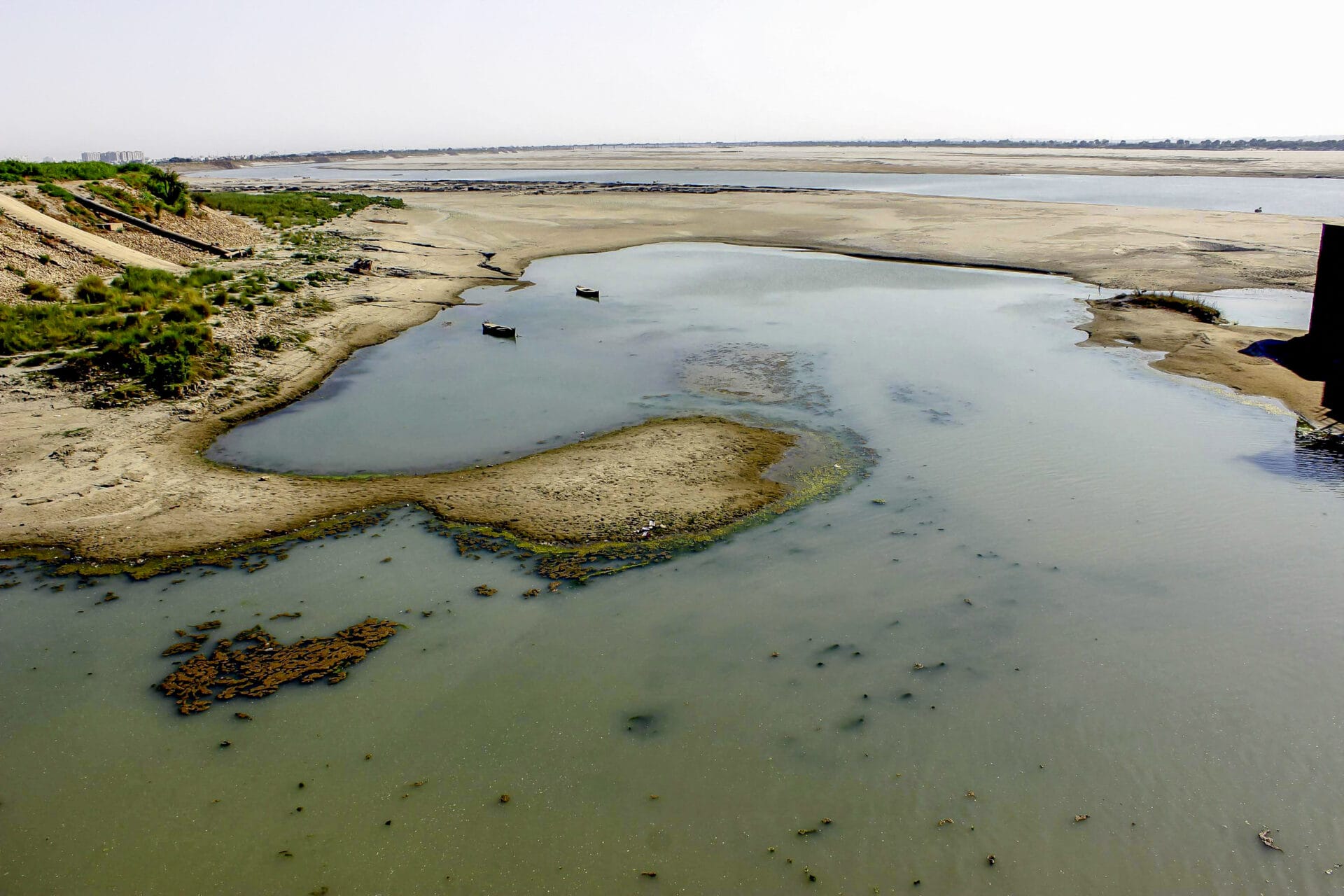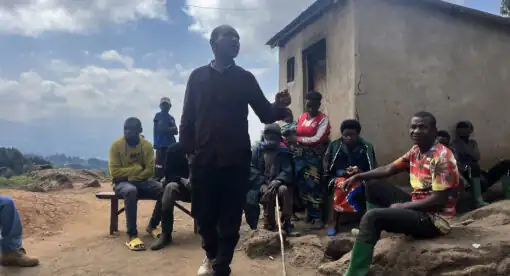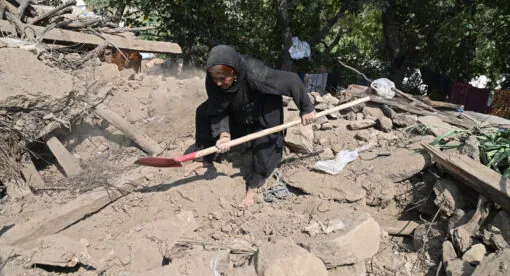This article is the third part of a series on Kashmir. Read part one, about India-Israel relations, here. Read part two, about Kashmir’s insurgency, here.
India’s decision to walk away from the Indus Waters Treaty (IWT) with Pakistan marks an unprecedented and consequential shift in one of South Asia’s few enduring frameworks for transboundary cooperation. For decades, the treaty was one of the few mechanisms that India and Pakistan had that ensured a modicum of cooperation and communication, even during the worst of times for bilateral relations. It endured despite wars, serious cross-border crises, and prolonged diplomatic freezes. Now it faces a potential suspension, which carries risks that extend beyond bilateral water management and into the domain of regional security. The treaty’s failure could lead to an all-out war between India and Pakistan.
For the United States, which maintains security partnerships and trade ties with India, continues counterterrorism cooperation with Pakistan, and seeks to manage growing Chinese influence in the region, this is a potential powder keg. A conflict over water would threaten regional stability, undermine counterterrorism objectives, and create openings for external factors, precisely at a time when Washington hopes to encourage responsible regional balancing.
History of the IWT
Pakistan has long feared that India could use its upper-riparian geography to throttle water flows into Pakistan. The fear became reality when, during the first India-Pakistan war over Kashmir in 1947-48, India stopped the water supply from the headworks of major eastern Indus River tributaries from flowing into Pakistan, resulting in the desiccation of 1 million acres of farmland in Pakistan. Then-Pakistani Prime Minister Liaqat Ali Khan described the “unilateral” move as “foundational violence” and declared water as a “new front of tension.” It became the genesis of the current lack of “hydro-solidarity” between the two countries and prompted the constitution of the joint technical management proposal of the World Bank for the Indus Basin.
The 1960 treaty delimits the rights and obligations of India and Pakistan for the use of waters in the Indus Basin and its tributaries. Nearly 300 million people in India and Pakistan live in the Indus Basin, which originates in the Himalayas in southwestern Tibet, winding through Kashmir before entering the Punjab and emptying into the Arabian Sea. River tributaries in the basin cover 65 percent of Pakistan’s and 14 percent of India’s drainage area. The IWT gives New Delhi unrestricted control over the three eastern rivers – the Beas, Ravi, and Sutlej – while Islamabad has control over the three western rivers – Jhelum, Chenab, and Indus – flowing through India-administered Kashmir into Pakistan.
India, as an upper riparian country, can use 20% of the water of the three western rivers for irrigation, transport, and power generation.
This arrangement brought a measure of predictability to the otherwise fractious relationship between the two countries. It survived even during the 1965 and 1971 wars and the 1999 Kargil conflict, precisely because it provided an apolitical platform for countries to restore peace.
The IWT has been one of the most successful water-sharing treaties and a confidence-building measure between the two adversaries, where religious sentiments run deep. Its success has been attributed to the Indus Commission, a built-in conflict-resolution mechanism, which allows the International Court of Arbitration, or any neutral expert appointed by the World Bank, to resolve disputes arising from yearly meetings between the two countries.
Fallout from the April 22 Attack
On April 22, unidentified gunmen killed 26 tourists in Pahalgam in Indian-administered Kashmir. Kashmir, claimed in full by both India and Pakistan and ruled in part by each, has been a flashpoint since the 1947 partition of the Indian Subcontinent by the British Empire. India blamed Pakistan for the attack, accusing it of backing cross-border terrorism, and suspended its participation in the IWT “until Pakistan credibly and irrevocably abjures its support for cross-border terrorism.”
Pakistan denied any involvement and demanded an independent investigation into the attack. It warned that it would consider any attempt to stop or divert the flow of water under the treaty, which ensures sufficient water for 80% of its farms, an act of war.
Bilawal Bhutto Zardari, a leader of the ruling coalition government in Pakistan, has gone a step further and warned India: “The Indus is ours and will remain ours, either our water will flow through it, or [India’s] blood.”
The Permanent Court of Arbitration in the Hague, which is hearing Pakistan’s objections to certain design elements of India’s run-of-river hydroelectric projects in Indian-administered Kashmir, asked both countries to file written submissions. While Pakistan filed its submission to continue with the IWT, India didn’t respond.
On June 27, the Permanent Court of Arbitration ruled that it was not open to India’s taking unilateral action to suspend the proceedings, regardless of how India’s position was characterized or justified under international law. The court ruled that the treaty contains no provision for unilateral “abeyance” or “suspension” and continues to remain in force until India and Pakistan mutually agree to terminate it.
India rejected that ruling, saying it has been issued in “brazen violation of the treaty” by what it called an “illegal Court of Arbitration” set up under the 1960 treaty. “Consequently, any proceedings before this forum and any award or decision taken by it are also for that reason illegal and per se void,” India’s Ministry of External Affairs said.
India has occasionally shut the dam gates in Indian-administered Kashmir, stopping water from flowing into Pakistan, just as farmers there rely on it to grow rice and other crops during the Kharif, or monsoon, season.
Consequences for Pakistan
The suspension of the IWT will have far-reaching consequences for Pakistan, a country heavily dependent on the Indus River system for irrigation of 80% of its 16 million hectares (39.5 million acres) of agricultural land and 93% of its total water use. This system supports 240 million people and contributes one-fourth of Pakistan’s GDP through crops like wheat, rice, and cotton.
With Pakistan’s Mangla and Tarbela dams having only 10% live storage capacity (14.4 million acre-feet), any disruption in water flow could cause catastrophic agricultural losses, food shortages, water rationing in major cities, and rolling blackouts.
Industries such as textile and fertilizer manufacturing could become paralyzed. These shocks would severely impact Pakistan’s already fragile economy, pushing it toward fiscal and foreign exchange crises.
The treaty provided Pakistan with some stability, and India’s withdrawal now opens the door to uncertainty, fear, and potentially devastating consequences for agriculture and food security.
India’s decision marks a major shift in its policy toward its nuclear-armed neighbor. It aims to use water as a strategic weapon to punish Pakistan for supporting Kashmiri separatists and harboring militants responsible for carrying out attacks in Indian-administered Kashmir.
India’s right-wing government, led by Prime Minister Narendra Modi, has long vowed to punish Pakistan for supporting Kashmiri separatists. Under Modi’s government, the war cries have grown to wrest control of Pakistan-administered Kashmir.
On Feb. 26, 2019, India, for the first time since the India-Pakistan war of 1971, launched military strikes on Pakistani soil, targeting an alleged militant training complex in Balakot in the Khyber Pakhtunkhwa province of Pakistan. The following day, Pakistan retaliated with airstrikes near Indian military installations in Indian-administered Kashmir that led to the capture of an Indian Air Force pilot after his MiG-21 aircraft was downed by Pakistan. On the same day, six other Indian Air Force officials and a civilian were killed when their helicopter was downed by friendly fire after it was mistakenly identified as Pakistani. To defuse the crisis, the government of then-Prime Minister Imran Khan released the captured Indian pilot two days later.
Modi has repeatedly called for the annexation of the Pakistan-administered Kashmir, while his party leaders have sought votes to strengthen the government’s resolve to achieve this feat. On Feb. 22, 1994, the Indian parliament unanimously passed a resolution stating that Pakistan-administered Kashmir was an integral part of India and calling for Pakistan to end its “illegal and forcible occupation.”
Using water as leverage fits into this strategy. Modi, for the first time, hinted at using the IWT as a weapon against Pakistan in 2016 after Kashmiri separatist militants attacked an Indian Army brigade headquarters in the northwest town of Uri, killing 19 soldiers and injuring dozens. Modi told a delegation of the IWT officials that “blood and water can’t flow together.” Since then, India has accelerated work on several hydropower projects like Kishan-Ganga, Pakal Dul, and others to fully exploit the western rivers and prevent excess water from flowing into Pakistan.
While India claims these projects are aimed at turning Indian-administered Kashmir into a net energy exporter, critics say India is using water strategically for border management and integration of the disputed region with the rest of the country.
While India may not be physically able to cut off water to Pakistan overnight, the perception alone that it could is enough to provoke panic, deepen mistrust, and empower militant groups that already frame India’s water policies as aggression.
This adds a volatile dimension to the India-Pakistan conflict over Kashmir. The weaponization of water offers militant groups in Kashmir renewed ideological ammunition. They are likely to frame India’s disruption of river flows as not only a geopolitical act of aggression but also a direct attack on Muslim lives and livelihoods. It aligns closely with the historical grievance that Kashmiris are denied agency over their own natural resources.
In recent years, militant groups have targeted water infrastructure in Indian-administered Kashmir, and the groups’ leaders have made public statements warning India against interfering with river flows. Such rhetoric could easily be amplified in response to the treaty’s suspension, giving militants a fresh pretext to justify violence.
In Indian-administered Kashmir, where support for anti-India separatist voices and militants runs deep, throttling water to Pakistan could unleash pro-Islamabad voices, which have been silenced by force in recent years.
The exclusion of Kashmiris from IWT negotiations has long been seen as unfair and discriminatory. It illustrates their marginalization in the broader Kashmir conflict. Kashmir is consistently framed as a bilateral issue between India and Pakistan, leaving no room for the Kashmiri perspective, the most crucial piece of the puzzle.
India’s disengagement from the IWT introduces a dangerous new element to the long-standing Kashmir dispute, effectively weaponizing water in a region already marked by deep instability and nuclear risk. By undermining a key mechanism for conflict management, the suspension will create fertile ground for escalation.
Militant group leaders have threatened retribution if India disrupts the flow of water to Pakistan. With Pakistan struggling to contain terrorist attacks, which have intensified after the return of the Taliban to Kabul, militant groups could dent Islamabad’s capability to cooperate with India on water issues. And the treaty’s disruption deepens insecurity and casts a long shadow over a region where tensions are already at a breaking point. It becomes a source of insecurity and instability, serving as yet another trigger for escalations and attacks in Kashmir.
The Insurgency in Kashmir
An insurgency has simmered on the Indian-administered side for nearly 35 years, claiming tens of thousands of lives. The human rights groups, including U.N. Human Rights Council, have accused the Indian armed forces of human rights violations in Kashmir, including torture, arbitrary detention, murder, and mass rape. In 2010, leaked diplomatic cables revealed a briefing by the International Committee of the Red Cross to U.S. officials that details a range of abuses in detention facilities run by the Indian Army as well as by local police and paramilitaries.
A 354-page landmark report compiled by the Association of Parents of Disappeared Persons and the International People’s Tribunal on Human Rights and Justice in Indian-Administered Kashmir has identified more than 900 individuals it blames for a range of human rights abuses carried out by Indian security forces between 1990 and 2014, including 150 military officers of the rank of major or above. The report documents the extrajudicial killings of 1,080 people and the enforced disappearance of 172 people in detail, as well as further cases of torture and sexual violence.
In 2021, Khurram Parvez, one of the authors of the report, was arrested under a stringent terrorism law, the Unlawful Activities Prevention Act, for “criminal conspiracy and waging war against the Indian government.” He continues to be imprisoned in Tihar jail in New Delhi. Other authors, including Gautam Navlakha, too, faced jail and police raids at their homes after the report was released. India’s National Security Advisor Ajit Doval described civil society groups in India as “new frontiers of war” and said they could be “manipulated to hurt the interests of a nation.”
Tensions escalated further on Aug. 5, 2019, when India annexed Kashmir and abrogated Article 370 and Article 35-A of its constitution, stripping the region under its control of its limited autonomy over local laws, land rights, and jobs. While New Delhi argued the move would curb separatism and violence, it instead triggered a widespread crackdown. Indian authorities jailed rights activists and journalists, imposing sweeping restrictions on free speech, and pressured newspapers to erase their archives that documented decades of human rights violations, effectively turning them into mouthpieces for government press releases.
Effect on International Legal Norms
India long has been trying to use water as a tool to pressure Pakistan to end its support to Kashmir’s right to self-determination guaranteed under U.N. Security Council resolutions. The suspension of the IWT is seen by India as a punitive measure to make Pakistan pay a cost for its “war of bleeding India with a thousand cuts.” It has gained momentum under the right-wing Hindu government led by the Bharatiya Janata Party. In June, India’s Home Minister Amit Shah said, “No, (the IWT) will never be restored. An international treaty can’t be annulled unilaterally, but we had the right to put it in abeyance, which we have done.”
Despite Shah’s comments, there is no exit clause in the treaty, preventing its signatories, India, Pakistan, and the World Bank, from unilaterally exiting it. World Bank President Ajay Banga reiterated that sentiment: “There is no provision in the treaty to allow for suspension, the way it was drawn up. It either needs to be gone, or it needs to be replaced by another one that requires the two countries to want to agree,” Banga said.
And U.N. spokeswoman Stephane Dujarric said, “It is critical that natural resources be shared based on mutually accepted treaties.”
With India’s suspension of its participation in the treaty, there is a broader danger of weakening international legal norms at a time when water insecurity is growing globally along with instances of upper riparian states punishing lower riparian states. If a powerful country like India can unilaterally walk away from a longstanding treaty without consequence, it undermines trust in multilateral frameworks essential for managing transboundary resources worldwide.
India and Pakistan must de-escalate the water issue, preventing it from turning into something that is not just part of the countries’ ideological rivalry but also builds sympathy inside Pakistan for militant groups. Given that Pakistan is a water-stressed country, with most of its population completely dependent on agriculture for their livelihoods, the water issue will also encourage Pakistan’s military to think of sub-conventional warfare as an option to target India, because this issue alone has the power to turn the conflict more ideological than territorial.
With Pakistan’s growing vulnerability to climate change, the IWT fails to resolve how to share water during drought years, when river flows can drop to half their normal levels, and the downstream effects of upstream dams on flow and hydropower along the western rivers. The glaciers feeding the Indus basin in the Himalayas, Karakoram, Hindu Kush, and Western Tibet have started receding, diminishing the peak flow of the Indus River. The changing monsoons and extreme patterns of rainfall have triggered flash floods killing over 200 people since late June, and their intensity will increase in the future, leading to the displacement of communities and greater migration. It has a direct impact on Pakistan’s food security and will push millions of people into cycles of poverty. This, in turn, will provide fertile ground for extremist groups to recruit youths into militancy. These factors could exacerbate the existing tensions between India and Pakistan, as well as Afghanistan and China, which also share the Indus Basin.
Deepening China-Pakistani Ties
China, an upper riparian on the Brahmaputra River and a close strategic partner of Pakistan, has signaled support for Islamabad and framed India’s suspension of the IWT as an unlawful coercive diplomacy. Victor Zhikai Gao, vice president of the Center for China and Globalization in Beijing, said China, as an upper riparian state, might stop the flow of water from the Brahmaputra River into India to support its “all-weather friend,” Pakistan. With the China-Pakistan Economic Corridor (CPEC) tying their economic futures together, Beijing sees India’s treaty suspension as a manifestation of a strategy aimed at destabilizing regional equilibrium.
Meanwhile, Pakistan is also upgrading its nuclear arsenal with Chinese support to offset India’s conventional superiority. The U.S. Defense Intelligence Agency recently assessed that Pakistan sees India as an existential threat, a view only deepened by water insecurity. Pakistan primarily is a recipient of China’s economic and military largesse, and Pakistani forces conduct multiple combined military exercises every year with China’s People’s Liberation Army, including an air exercise in November 2024.
In recent years, China has aggressively supported Pakistan in all war and peace initiatives to corner India. In recent military strikes, Pakistan used Chinese-made supersonic missiles to down Indian aircraft. China, which claims sovereignty over parts of Ladakh in Indian-administered Kashmir and had opposed India’s “unilateral” decision to annex Indian-administered Kashmir, has also supported Pakistan’s stand on Indian-administered Kashmir.
Recommendations
India’s withdrawal from the IWT could make it more difficult to defuse the current crisis between itself and Pakistan, at least in the immediate term.
India’s withdrawal lacks the procedural discipline and legal clarity needed to establish legitimacy. It not only threatens Pakistan’s water and food security, but also shrinks the space for diplomacy, heightens the risk of miscalculation, and could escalate into armed conflict. Rather than abandoning the treaty, the wiser path would be to reform and modernize it to meet present-day challenges like armed conflict, climate change, and growing water stress.
Given the deep mistrust between India and Pakistan, there is a need for a credible third-party mediator. The United States, with its global influence and longstanding ties with both countries, is ideally suited for that function. It is well-positioned to play a constructive role in facilitating dialogue, technical cooperation, and dispute resolution under the IWT framework. The U.S could help reinforce mechanisms like the World Bank-facilitated Permanent Indus Commission, neutral expert panels, and arbitration processes, ensuring they remain functional and trusted by both parties. Its strategic intervention would align closely with its broader policy objectives in South Asia to foster regional stability, prevent conflict escalation, and maintain open channels of communications between India and Pakistan.
In light of China’s announcement that it will build the world’s largest hydropower project on the Yarlung Zangbo in Tibet, the abeyance of the IWT affects not only bilateral cooperation between India and Pakistan but also the larger politics of water-sharing in South Asia. China’s upper riparian status could allow it to throttle water flow to India, which can have a potentially serious impact on millions of people downstream. India’s treaties with Nepal and Bangladesh may also come under question, while China is likely to take advantage of rising opportunities to deepen its strategic and hydrological presence in the region. Considering India’s rough relations with its neighbors, New Delhi should give keen attention to initiating steps to enhance trust and solidarity among its riparian neighbors instead of giving them incentive to oppose its interests. New Delhi should consider reopening dialogue with Pakistan not only to address the technical aspects of the IWT, but also to resolve amicably the long-pending issue of Kashmir’s status. Without engagement, there is a growing risk that militant groups in the Pakistan-Afghanistan region could weaponize the water issue to stoke anti-India sentiment and encourage Pakistan’s military to consider sub-conventional warfare as an option to target India.
Pakistan must rein in militant groups and anchor its response in international law and diplomacy. The civilian government should ask the Pakistani military to take a backseat and engage directly in all relevant multilateral forums, mobilize water-stressed nations, and work closely with the U.S. and other stakeholders to convince India to engage in dialogue. Pakistan, with its vulnerability to climate change-induced food insecurity, has every incentive to pursue stable, cooperative relations with its neighbors, particularly India, if it hopes to lift its population out of cyclical poverty.
Preventing the collapse of the treaty would demonstrate that resource-sharing and confidence-building agreements are possible, even in one of the world’s most volatile and nuclearized regions.
The views expressed in this article are those of the author and not an official policy or position of New Lines Institute.






